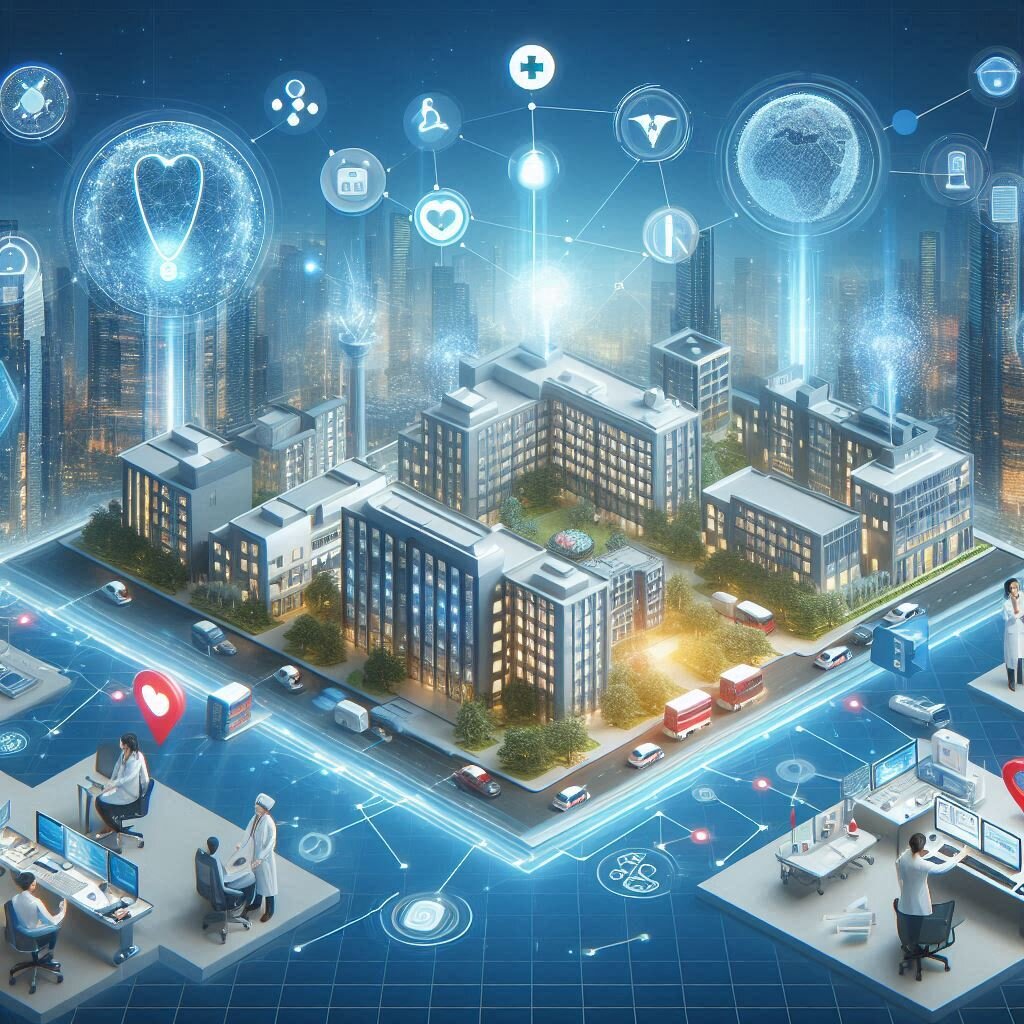Healthcare infrastructure is a vital aspect of any society, encompassing the systems, facilities, and resources required to deliver quality health services. From small clinics in rural areas to state-of-the-art urban hospitals, this infrastructure is the foundation that enables effective and equitable healthcare delivery. Understanding its significance, components, challenges, and future potential is critical for building a healthier world.
Table of Contents
ToggleUnderstanding Healthcare Infrastructure
Healthcare infrastructure is more than just physical structures like hospitals and clinics. It includes the network of facilities, skilled professionals, technology, and systems required to provide medical services effectively. It is the backbone of preventive care, diagnosis, treatment, and rehabilitation. This infrastructure not only addresses immediate health needs but also ensures resilience during public health emergencies.
Core Elements Shaping Healthcare Delivery
A well-functioning healthcare infrastructure relies on several interconnected elements:
- Physical Facilities: Hospitals, diagnostic centers, and community clinics form the physical core of healthcare delivery.
- Skilled Workforce: Healthcare professionals such as doctors, nurses, and paramedics play a pivotal role in maintaining quality care.
- Technology Integration: Tools like telemedicine, electronic health records (EHRs), and AI-powered diagnostics have revolutionized healthcare.
- Logistics and Supplies: The timely availability of medications, vaccines, and medical equipment is essential.
- Regulation and Policy: Government frameworks ensure that healthcare remains accessible, affordable, and high-quality.
The Importance of Healthcare Infrastructure
A robust healthcare system directly impacts the well-being of communities. It enhances life expectancy, reduces disease burden, and contributes to economic stability. Accessible healthcare infrastructure ensures that rural and urban populations receive equitable services, reducing health disparities. Moreover, it strengthens resilience against public health crises, such as pandemics, enabling societies to respond effectively.
Beyond health, the economic implications are significant. Healthy populations are more productive, reducing absenteeism and increasing workforce efficiency. Furthermore, lower healthcare costs alleviate financial burdens on families, governments, and businesses, promoting economic growth.
Components of an Effective System
A comprehensive healthcare infrastructure is divided into primary, secondary, and tertiary care levels:
- Primary Care: The first point of contact for individuals seeking medical assistance. It focuses on prevention, vaccination, and basic treatments.
- Secondary Care: Offers specialized services like cardiology, endocrinology, and general surgery, typically through hospitals and regional health centers.
- Tertiary Care: Advanced medical interventions, including oncology treatments, organ transplants, and complex surgeries.
Supporting these care levels are health information systems that provide data for informed decision-making and supply chains that ensure the availability of essential resources.
Challenges and Gaps in Healthcare Systems
Despite its importance, healthcare infrastructure faces numerous challenges:
- Unequal Access: Rural areas often lack basic facilities, forcing residents to travel long distances for care.
- Insufficient Workforce: Many countries face shortages of healthcare professionals, leading to overburdened staff and compromised care quality.
- Outdated Technology: Inadequate investment in modern medical equipment and digital systems hampers efficiency.
- Funding Limitations: Underfunding leads to poorly maintained facilities, lack of supplies, and insufficient staff training.
- Policy Gaps: Weak regulatory frameworks can result in inequitable distribution of resources.
The COVID-19 pandemic exposed many of these weaknesses, highlighting the urgent need for systemic improvements.
Addressing the Challenges
To overcome these obstacles, a multi-faceted approach is required:
- Increasing Investment: Governments and private sectors must allocate more resources to building and maintaining infrastructure.
- Technology Integration: Expanding telemedicine and digital records can bridge gaps, especially in underserved areas.
- Workforce Development: Training and retaining healthcare professionals through better incentives and working conditions.
- Public-Private Partnerships: Collaborations can drive innovation, enhance efficiency, and improve service delivery.
- Community Involvement: Local communities can play a crucial role in identifying needs and ensuring accountability.
Looking Ahead
The future of healthcare infrastructure lies in embracing innovation. Artificial intelligence, robotics, and personalized medicine are set to revolutionize care delivery. Green hospitals and energy-efficient facilities will align health systems with sustainability goals. Additionally, global collaborations can address transnational health challenges and improve overall resilience.
The Role of Individuals
Individuals play a pivotal role in shaping healthcare systems. By advocating for better infrastructure, supporting local health initiatives, and adopting preventive care practices, citizens can contribute to stronger health systems. Awareness and engagement ensure that policies and resources are aligned with community needs.
Conclusion
Healthcare infrastructure is the foundation of a thriving society. It enables quality care, enhances resilience, and promotes equity. However, challenges such as unequal access, workforce shortages, and funding gaps must be addressed through innovative strategies and collaborative efforts. By investing in healthcare infrastructure and fostering individual and collective responsibility, we can build systems that not only meet today’s needs but also prepare for future challenges. A healthier, more equitable future is within reach, provided we prioritize this critical aspect of societal development.
